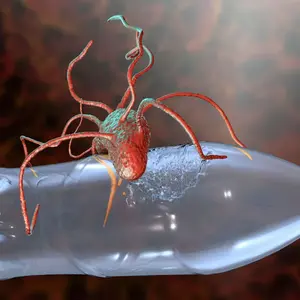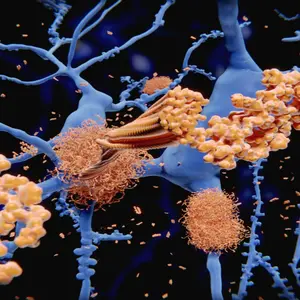

Emerging

Emerging
Yoga Breathing Affects Spinal Fluid Dynamics
Practicing yogic breathing may have an effect on an individual’s cerebrospinal fluid (CSF) dynamics—the movement, flow, and circulation of the CSF—and on the health of the central nervous system, according to a new study published in the journal Scientific Reports. This study, conducted by researchers at Oregon Health & Science University and funded by the National Center for Complementary and Integrative Health, the National Institute on Aging, and the National Center for Advancing Translational Sciences, was the first to analyze the impact of deep breathing on CSF dynamics.
CSF is a type of fluid compartment around the brain and spinal cord that serves as a cushion for these organs. CSF distributes nutrients and hormones, and along with interstitial fluid (ISF, the fluid found in the spaces around cells), helps the central nervous system to remove metabolic waste from its environment.
Like most fluids in our body, the CSF also moves. In fact, the study of CSF dynamics has become a recent focus in the field of neuropathology. Understanding how the CSF moves and exchanges with ISF is of high importance for Alzheimer’s and other diseases of the nervous system. CSF movement is driven primarily by pressure changes, usually from the pulsations of the heart and sometimes respiration.
Previous research discovered that CSF flow oscillations during the non-rapid eye movement stage of sleep are deeper and slower than the oscillations during wakefulness. This change in CSF dynamics that occurs during sleep may increase the rate at which the brain clears itself of waste because of increased exchange between the CSF and ISF. Researchers in this study hypothesized that a similar alteration in CSF flow oscillations and CSF-ISF exchange may occur during deep yogic breathing.
To test their hypothesis, the researchers used magnetic resonance imaging (MRI) to measure and compare the CSF velocities during yogic breathing and regular breathing. They recruited 18 healthy participants ages 18–61 years, all of whom did not regularly practice any mind-body exercise that focused on breathing. During an imaging visit, participants were provided with instructions on the breathing practices and became accommodated with the MRI machine prior to completing an hour-long MRI scan.
During the MRI session, participants were instructed to breathe in five different ways: spontaneous breathing, slow breathing, deep abdominal breathing, deep diaphragmatic breathing, and deep chest breathing. The latter three ways of breathing together make up a yogic breathing technique known as the three-part breath. Researchers collected respiration data with a respiration bellow and pulse data with a finger pulse sensor concurrently during the MRI session.
Researchers found that participants experienced a 16—28% increase in the power and velocity of the CSF flow in the skull during yogic breathing when compared to spontaneous breathing. Of the yogic breathing conditions, deep abdominal breathing led to the most statistically significant increase of CSF oscillation. Moreover, heart pulsation was shown to be the primary driver of the CSF movements during all the breathing conditions, with the exception of deep abdominal breathing, when there was a similar contribution of power from both respiration and heart pulsation.
Findings from this study suggest that respiration can potentially be the primary driver of CSF dynamics, depending on the form of breathing an individual is practicing. The researchers noted that the next step is to see how long-term yogic breathing training could affect the CSF dynamics, and therefore, central nervous system health.
REFERENCES
National Center for Complementary and Integrative Health. (2022, June 28). Yogic breathing affects cerebrospinal fluid dynamics during breathing practice. https://www.nccih.nih.gov/research/research-results/yogic-breathing-affects-cerebrospinal-fluid-dynamics-during-breathing-practice


 By
By







